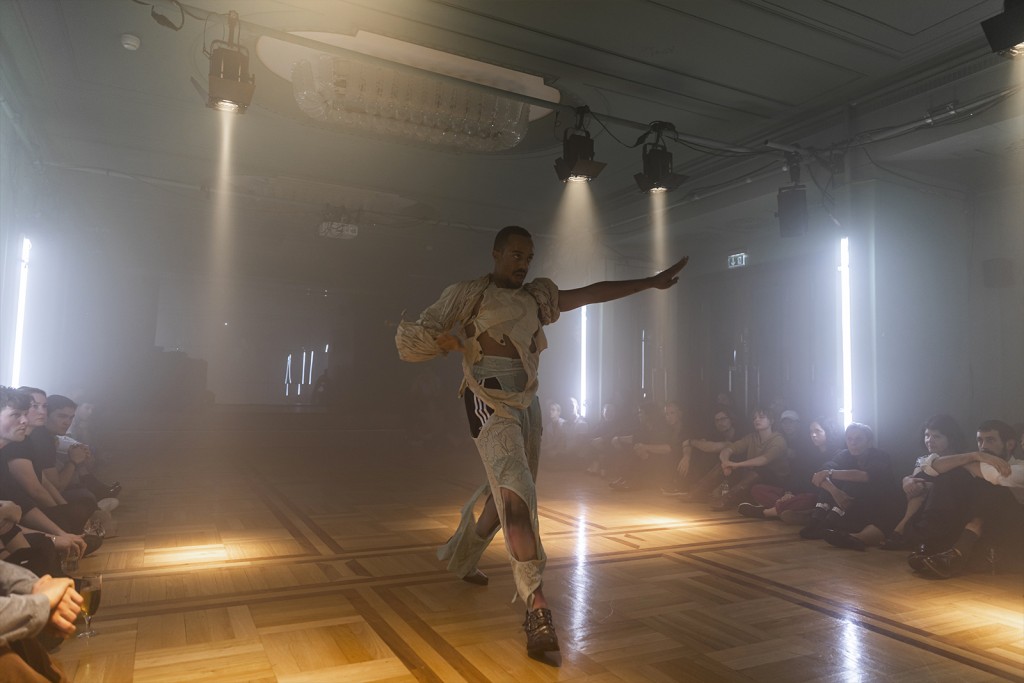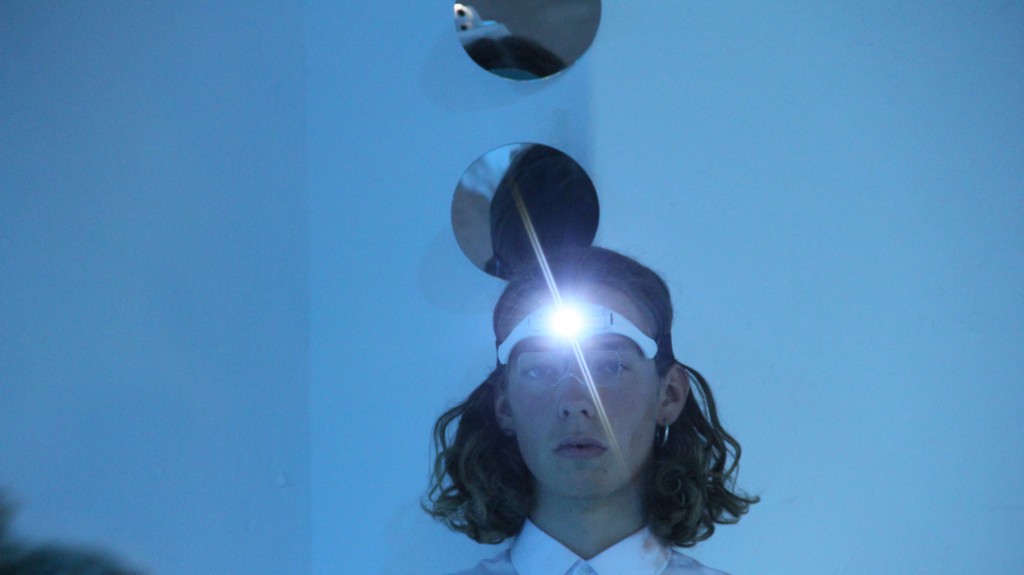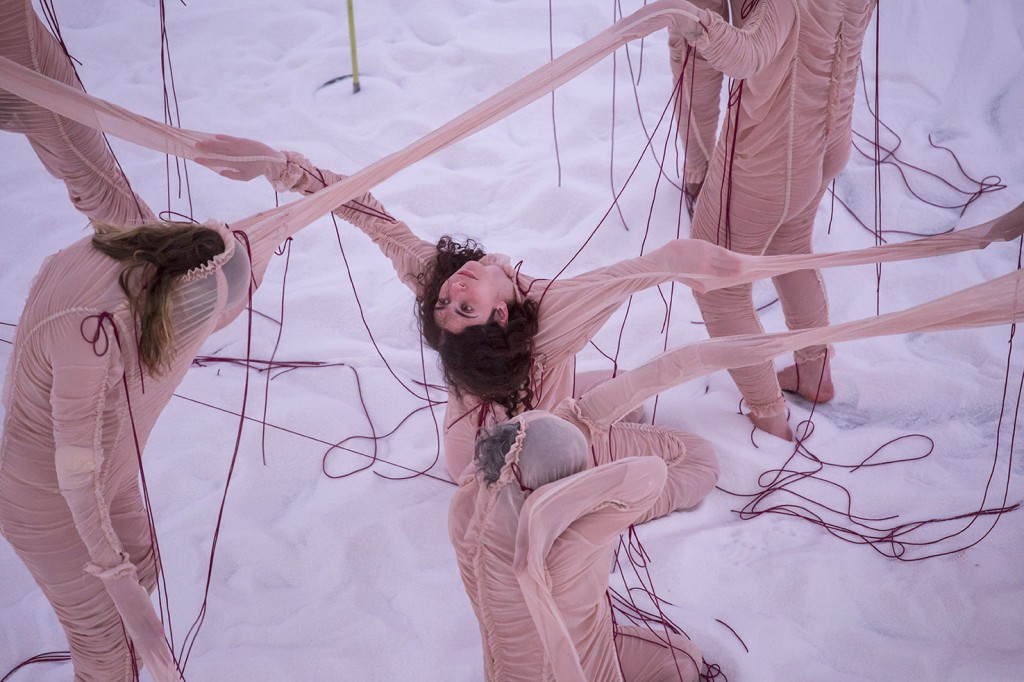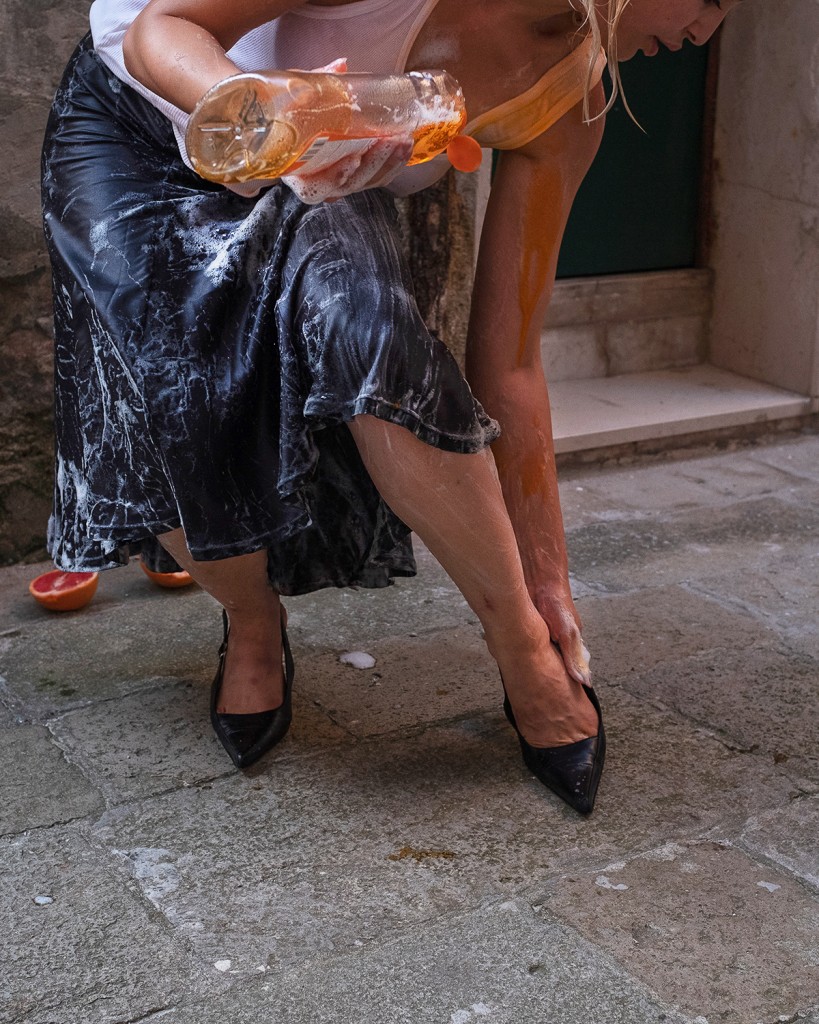What is it about performance that makes it the required medium for any new art initiative today? Historically, performance has been unwieldy for institutions to exhibit and collect. It is incredibly resource-intensive, requiring time and space for rehearsal, audio-visual equipment hire and, most importantly, fair wages for performers. Staging a performance is notoriously expensive in comparison to, say, most painting shows, which don’t typically require continuous upkeep and financing once mounted. More challenging to stage, and thus less-frequently seen, the medium is one that museums and their publics have been slow to warm to.
Yet, recent years have seen institutions and art events making strides in giving performance pride of place, integrating time-based works within exhibition programmes, permanent collection displays and biennials. The last two Golden Lions at the Venice Biennale have gone to works of performance art: for Anne Imhof’s disinterested tableau vivant, Faust (2017), at the German Pavilion and, this year, to the Lithuanian Pavilion’s opera on climate change, Sun & Sea (Marina) (2019), by the collective Neon Realism (Rugile Barzdžiukaite, Vaiva Grainyte and Lina Lapelyte). In April this year, the multimedia event and exhibition space The Shed opened in New York to equal amounts of fanfare and confusion surrounding the sheer spectacle of the art complex, with performance taking centre stage in a shiny new kinetic Hudson Yards building surrounded by skyscrapers of luxury condominiums.
This month marks the reopening of New York’s Museum of Modern Art after its absorption of the former American Folk Art Museum. The expanded MoMA is relaunching with The Studio, a space integrating time-based artworks within the permanent collection display. (However positive the project may be, the museum’s claim that ‘The Studio is the world’s first dedicated space for performance, process and time-based art to be centrally integrated within the galleries of a major international museum’ seems dubious, given the opening of Tate Modern’s Tanks in 2012.) Today, museums subsume entire buildings and real estate used for art springs out of the earth in Manhattan’s last underdeveloped parcel of land. Performance is a spark of life to these otherwise languid structures. It offers an immediacy and sheen of authenticity that counteracts the neo-liberal, tax break-funded initiatives in which the works are performed – pitting a sense of haptic touch against tempered glass and stainless steel.
Perhaps it’s precisely the soft science of working with and viewing other people that makes performance a refreshing counterpoint to an art industry that is increasingly commercialized and corporatized. Regardless of athleticism or ability, in dance traditionally made for the stage there’s a satisfaction – and, perhaps, seduction – in viewing the technique-driven, trained body of a performer. You could argue that the same holds true in contemporary performance. Artist Alicia Frankovich, for example, works almost exclusively with queer, crip or pregnant performers, and her improvised choreographic works come off as a celebration of community on stage.
Like Frankovich, there are countless artists, performers and choreographers whose practices are being developed as an embodiment of their politics, relation to others and communal engagement. Given that performance utilizes the material of others’ bodies, the primary substance of the medium is relation, and consciousness of such relationality is a defining hallmark. While issues surrounding responsibility and consent are not without their hiccups, arguably they are at least a forerunning concern for practitioners of the medium. As such, many of the artists working in performance today take social responsibility as their core material, combining the representation of a constituency in their work with the care in the material world necessary to help their communities flourish. This is evident in the work of Ligia Lewis, who investigates the limits of empathy in popular and relational representations of black people, and Alex Baczynski-Jenkins, whose choreographic work celebrates the public display of queer desire.
Born in the Dominican Republic, raised in Florida and living for most of her adult life in Europe, Lewis works as a choreographer, director, dancer and performer. After training in dance at Virginia Commonwealth University, Lewis began performing in other artists’ works before embarking on her own career as a choreographer. Living for many years in Berlin, a city known for its support of theatre, Lewis attended countless stage plays and performances, particularly at the Volksbühne. Spending so much time around the stage prompted Lewis to use the theatrical black box as material and site for her works. Her recently completed trilogy began with a reflection on race and representation within theatre. The first work, Sorrow Swag (2014), is a choreography for one white male, themed around the colour blue, and approaches issues of embodiment, gender and grief. The second, themed red and titled minor matter (2016), is a choreography for three dancers – often performed by two black men as well as Lewis herself. This energetic piece pulls from both vernacular dance, such as black American high-school step routines, and well-known works from the history of modern dance, including Maurice Béjart’s renowned 1960 piece Boléro. The work’s opening scene, in which a ballerina seductively stretches out her spot-lit arms in parallel above her head, takes on a different meaning when enacted by a black man.
Lewis’s latest work, Water Will (in Melody) (2018), concludes her trilogy and is themed in white. Choreographed for a cast of four women, Water Will takes as its subject willfulness and its uneven application to us depending on social markers such as gender, class and race. Inspired by feminist scholar Sara Ahmed’s Willful Subjects (2014) and the Brothers Grimm’s fairy tale ‘The Willful Child’ (1815), the work breaks with the expectation that, because its creator is a woman of colour, it must bear biting, direct social commentary. Water Will explores the concept of interiority through metaphors relating to femininity: the set is cavernous, dark, affective and wet – in the last scenes, the stage actually rains, as if crying. While Lewis is keenly attuned to the continued racialized persecution faced by people of colour, she has focused her practice on creating other possibilities for viewing and sensing the world in order to reflect on relation and empathy. Although Lewis is working on a range of visual arts commissions, she is also planning a new stage-based work for 2021.
Alex Baczynski-Jenkins is a choreographer who explores queer desire. Based in London and Warsaw, and of English-Polish heritage, Baczynski-Jenkins comes from a less traditional dance education than Lewis, with a focus on somatics (a field of movement studies that emphasizes the dancer’s internal experience). However, similarly to Lewis’s, his work is focused upon caring for a community, both representationally and materially. In a 2019 interview with Eliel Jones in Mousse Magazine, he states of his collaborators and performers: ‘Who you want to work with is who you want to share your life with.’
In 2015, as Poland’s right-wing government ascended to power, Baczynski-Jenkins co-founded, with Marta Ziółek, the queer and feminist space KEM in Warsaw. Located in a former factory, KEM initially functioned as a rehearsal and studio space to support other choreographers’ work. When the building was demolished to make way for new real estate, KEM took up residence in other institutions such as MoMA Warsaw (itself housed in temporary quarters) and Zachęta. Most recently, for KEM’s residency at Ujazdowski Castle Centre for Contemporary Art, Baczynski-Jenkins and his collaborators Krzysztof Baginski, Ola Knychalska and Ania Miczko threw a series of parties called Dragana Bar that functioned as an underground safe space in a city where homophobic sentiments are increasingly common and condoned by a far-right government.
Like KEM, Baczynski-Jenkins’s own choreographic work is created through structures of communal care and interdependence. His most recent work, Untitled (Holding Horizon) (2018), was developed as part of the Frieze Artist Award and performed at the Venice Biennale in 2019. Inspired by KEM’s Dragana Bar, this durational work is staged in a dark room and based on the box step, performed tirelessly by a large group of queer dancers.
Other works choreograph everyday queer life. Us Swerve (2014) is an orchestrated choreography of men on rollerblades, encircling each other like pendulums, with desire as the gravitational force. The two-hour work was inspired by the artist’s residency at Ashkal Alwan in Beirut, where he watched men cruising on rollerblades at the waterfront. Baczynski-Jenkins’s choreography takes the normally private experience of yearning and celebrates its queering as a public act; his performers embody the jubilance, apprehension and vulnerability that comes with this transformation of private to public. One of the most enduring myths pervading our industry, from both within and without, is that art and its practitioners are disconnected from the material realities of labour. This toxic misconception serves to disconnect ethics from our practices, despite the art industry feeling the material consequences of real estate run amuck, the economic effects of forcibly flexibilized working structures and the socio-political effects of government-condoned racism and homophobia. That practitioners such as Lewis and Baczynski-Jenkins place representation and social responsibility so centrally in their art is an essential and invigorating rejoinder.
KAREN ARCHEY
Karen Archey is an independent curator and art critic based in Berlin.




